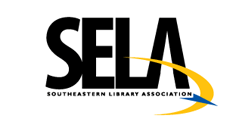Abstract
In the last fifteen years, digitization of rare books and manuscripts in special collections libraries has begun to play an increasingly significant role in providing access for students, faculty, independent scholars and members of local and academic communities. The digitization of print materials is now frequently undertaken for a variety of purposes and with varying degrees of success. Libraries digitize manuscripts and rare books to promote known and hidden collections, preserve fragile materials, and provide on and off-campus access to users, while new uses and possibilities are continually being explored and implemented. Some early scholarship on the subject, however, has expressed both excitement and concern about what the digitization of rare books and manuscripts means for the future of special collections libraries. Given the mix of both anxious and optimistic projections, what does digitization mean for user’s perception of physical collections in terms of their purpose, usefulness, and essentially value in a world where digital surrogates are widely available? While much scholarship can be found on the subjects of copyright, fair use, and standard digitization practices as the field continues to grow and evolve, the following is a discussion on how these developments affect the ways in which users perceive and experience books as a physical object; how digital surrogates are encountered; and their potential in serving as a substitute or stand in for primary sources.
Publication Date
4-1-2018
